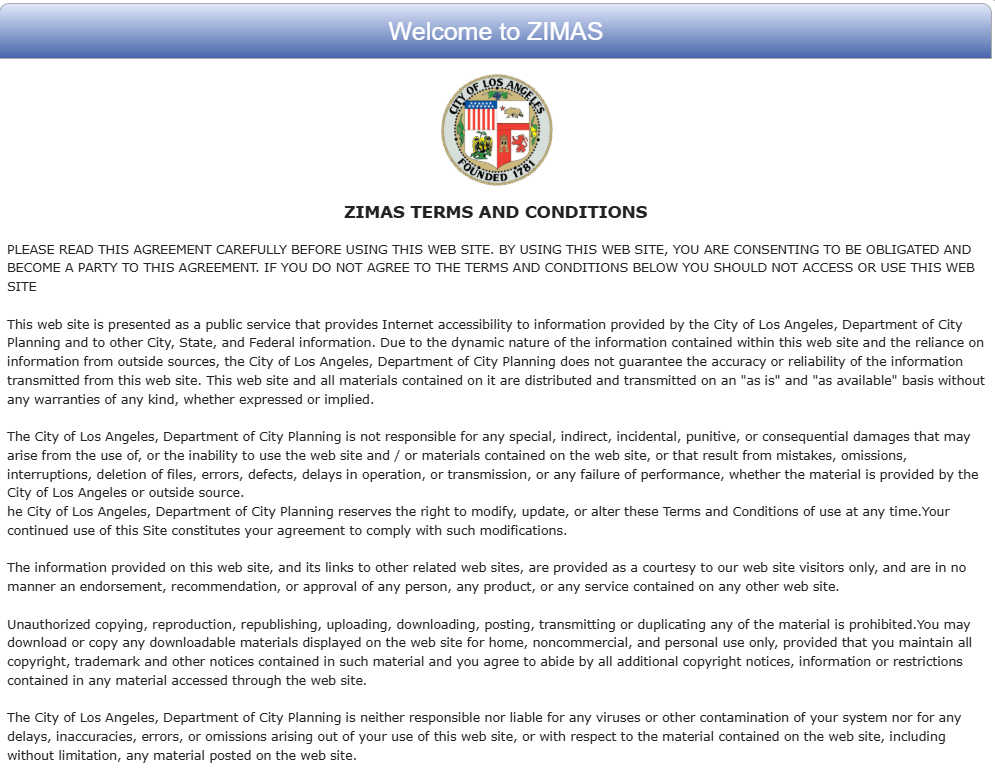Can You Open Physical Therapy Clinic in M1 or CM Zone in Los Angeles?
Imagine this: you’ve found what looks like the perfect property for your physical therapy clinic in Los Angeles. The rent is reasonable, the location is accessible, and the space itself seems ready for build-out. You’re excited to move forward. Then, you look at the zoning code — and suddenly, everything is uncertain.
Table of Contents
ToggleThis scenario is more common than most new tenants realize. Los Angeles has one of the most complex zoning systems in the country. A single property can carry multiple designations, overlays, and restrictions. To make matters worse, listing platforms like LoopNet often display outdated or incomplete zoning information. A landlord may insist a property is zoned one way, while city records suggest something entirely different.
That exact situation comes up often when tenants consider properties in M1 (Limited Industrial) or CM (Commercial Manufacturing) zones. These areas are traditionally reserved for light industrial and manufacturing activity, but they sit in neighborhoods where commercial and medical uses are increasingly in demand. The question becomes: can you legally open a physical therapy clinic in either zone?
The short answer: it depends, but the risks are very different. M1 is usually too restrictive, while CM may provide a viable path — if you do your due diligence. At JDJ Consulting Group, we’ve seen tenants lose thousands because they trusted a landlord’s word instead of verifying zoning. Our opinion is clear: physical therapy belongs in a commercial setting, not an industrial one.
🏗️ Zoning Verification Flowchart
What Do M1 and CM Zoning Really Mean?
To answer the question properly, you first need to understand what these zones represent in the City of Los Angeles.
M1 (Limited Industrial Zone):
M1 is designed for light industrial activities like assembly, manufacturing, repair shops, warehousing, and some limited wholesale operations.
The intent is to provide space for economic activity that doesn’t belong in residential or commercial neighborhoods but isn’t as heavy as full industrial operations.
Think of businesses like a small machine shop, furniture refinishing, or light storage facilities.
Importantly, M1 zones do not automatically allow retail or medical uses. The goal is to protect industrial businesses from being pushed out by more profitable but less compatible tenants.
CM (Commercial Manufacturing Zone):
CM is a hybrid category that blends aspects of commercial and industrial zoning.
It allows light industrial uses but also opens the door for certain commercial activities.
Examples include showrooms, gyms, professional offices, and in some cases, medical facilities.
CM zones were created for areas where industrial and commercial uses mix — think of a block with both workshops and design studios, or a warehouse district transitioning into a creative office hub.
At first glance, both zones may seem similar. But the difference is huge when it comes to permitted uses. A physical therapy clinic is not just another “office.” The city tends to classify it closer to a medical office or clinic use — and that makes all the difference in whether the property is compliant.
Our opinion: if you’re thinking about a medical use, CM gives you a fighting chance. M1 is far more restrictive and risky.
The Importance of ZIMAS vs. Broker Listings
Here’s where many tenants fall into a trap. They see a listing on LoopNet or Crexi that says the property is zoned M1, and they assume that’s accurate. Or worse, they take the landlord’s word for it. In Los Angeles, that’s a recipe for disaster.

The Zoning Information and Map Access System (ZIMAS) is the City of Los Angeles’ official online zoning tool. By entering an address, you can pull up the most current zoning classification, along with overlays, plan areas, and restrictions. Unlike listings, which often rely on outdated records, ZIMAS reflects the city’s official stance.
Consider this common situation:
A LoopNet ad lists a property as M1.
A landlord assures you it’s “perfectly fine for office or clinic use.”
You check ZIMAS and see the zoning is actually CM-2D-CPIO.
Which source matters? Always ZIMAS. The city’s database governs approvals, not what’s printed in a flyer. A landlord might not even realize their property carries a Community Plan Implementation Overlay (CPIO) or a “D” development limitation.
Our stance is blunt: if you’re about to invest in a lease or build-out, trust the city’s records, not the landlord’s sales pitch. Brokers and owners rarely have the incentive to dig into zoning details. You do — because you’re the one who’ll be stuck if your use isn’t permitted.
How Los Angeles Classifies Physical Therapy Clinics
The next key issue is how the city views physical therapy. Is it a medical office? A general office? Something in between?
In practice, Los Angeles usually treats physical therapy as a medical clinic or medical office use. Why? Because it involves licensed professionals providing treatment, not just administrative work. Patients come in for care, equipment may be used, and the activity resembles healthcare more than general office functions.
This distinction matters. For example:
General offices (law firms, accountants, consultants) are allowed in far more zones, including CM.
Medical offices/clinics face stricter limits because of parking requirements, patient activity, and compatibility concerns.
The City of Los Angeles publishes a Use List Memo that categorizes what types of businesses are permitted in each zone. While physical therapy may not be spelled out word-for-word, it is consistently interpreted as a subset of “medical office.” That means if the zoning allows medical clinics, you’re safe. If not, you may need a conditional use permit.
Opinion: Trying to argue that physical therapy is just another “office” is risky. Inspectors and plan checkers are not likely to buy it, and you could end up with a rejected application. It’s better to accept that physical therapy is medical and plan around that classification.
Physical Therapy in M1 Zones – The Risks
Now let’s get specific. If your property is truly zoned M1, can you operate a physical therapy clinic there?
In almost all cases, the answer is no. M1 zones are meant to preserve industrial land for industrial uses. Medical clinics do not fit that purpose. The city has repeatedly resisted letting commercial tenants take over industrially zoned spaces unless there’s a very specific tie to industrial operations.

The risks of trying to establish a clinic in M1 are high:
Permitting roadblocks – The Department of Building and Safety will likely deny your permit when you apply for a change of use or tenant improvements.
Legal exposure – Operating without the proper zoning can lead to fines, “orders to comply,” or even forced closure.
Lease disputes – If you sign a lease assuming you can run your clinic, but the city denies approval, you could be stuck paying rent for a space you can’t use.
Wasted investment – Build-outs for medical uses are expensive. Losing that investment because of zoning is devastating.
Real-world example: We once consulted for a client who tried to open a wellness clinic in an M1 zone. The landlord insisted it was fine. After six months of delays, the city rejected the permits outright. The tenant lost their deposit, their construction budget, and nearly a year of business.
Our opinion: M1 zones are a trap for medical tenants. They may look affordable, but the zoning risk outweighs any savings. Unless you’re prepared for a lengthy and uncertain entitlement process, avoid M1 for physical therapy.
Physical Therapy in CM Zones – The Possibilities
While M1 is almost always a dead end for physical therapy, CM (Commercial Manufacturing) zoning is more promising. This hybrid category was created for transitional areas of the city, where commercial and industrial uses overlap. Think of districts where you see furniture showrooms next to warehouses, or a gym sharing a block with light assembly shops.
In a CM zone, you have more flexibility:
Offices, showrooms, and some professional services are generally permitted.
Fitness centers and gyms are often allowed, since they align with neighborhood commercial activity.
Medical uses, including clinics, may be possible, depending on overlays and specific site conditions.
Why does this matter for physical therapy? Because your clinic isn’t just a business office — it’s a hybrid. Patients may treat it like a wellness center, but the city treats it like a medical facility. CM zoning creates a gray area that sometimes works in your favor.
That said, not all CM properties are equal. A CM-2D-CPIO designation, for example, comes with three extra layers of rules:
The “2” refers to the height district, which controls density and development standards.
The “D” is a development limitation, often tied to floor area or parking ratios.
The CPIO (Community Plan Implementation Overlay) reflects neighborhood-specific rules, which can be very restrictive.
If your property falls under this combination, the CM zoning gives you a foundation to argue for medical use, but the overlays could complicate it. Parking requirements, in particular, can be a stumbling block. A physical therapy clinic with multiple treatment rooms and high patient turnover may trigger more parking spaces than the site can provide.
Opinion: CM zoning is workable for physical therapy, but it’s not a free pass. You still need to confirm whether medical offices are permitted outright or if you’ll need a Conditional Use Permit (CUP). Unlike M1, where the answer is almost always “no,” CM offers a legitimate path forward — provided you do the homework.
🚗 Parking Space Requirements in LA
Source: Los Angeles Municipal Code, Section 12.21 A.4 (Parking Requirements)
The Role of Overlays (CPIO, “D” Limitations)
One of the biggest mistakes tenants make in Los Angeles is stopping at the base zoning designation. They see “CM” or “M1” and assume that’s the whole story. In reality, overlays and supplemental codes often have more impact than the base zone itself.
Let’s break down the two most common ones relevant here:
“D” Limitations
These are site-specific restrictions tied to floor area, density, or parking.
For example, a CM property might technically allow a medical office, but the “D” condition could require one parking space per 200 square feet. If your clinic is 2,000 square feet and the lot only has six spaces, you’ve got a compliance problem.
These restrictions often date back decades, tied to neighborhood battles over traffic or overbuilding.
Community Plan Implementation Overlay (CPIO)
The CPIO is tied to the city’s broader community planning effort. It establishes detailed rules for specific districts.
In practice, this means certain uses may be prohibited outright, or design standards may apply. A CPIO might restrict signage, limit building heights, or even prohibit certain commercial uses to protect neighborhood character.
For medical uses, CPIOs can be especially tricky if they impose stricter parking requirements or limit “intensive” commercial activity.
For a physical therapy clinic, these overlays can make the difference between a straightforward approval and a months-long battle. A tenant who only checks “CM” and assumes they’re safe could be blindsided when the city rejects their plan due to a parking shortage or an overlay restriction.
Opinion: Overlays are not fine print — they’re the rules that will decide whether your clinic can open. Ignoring them is like buying a car without checking if the engine works. If you see “D” or “CPIO” after your zoning designation, assume you need expert help before signing anything.
Due Diligence Before Signing a Lease
This brings us to the most critical step: don’t sign a lease until you’ve confirmed zoning. Too many tenants rush into agreements because they’re afraid of losing a space, only to find out later that their business isn’t legally allowed to operate there. By that point, they’re stuck paying rent, legal fees, or worse.

Here’s how proper due diligence should look for a prospective physical therapy clinic in Los Angeles:
Zoning Verification Letter (ZVL): Request an official letter from the Los Angeles Department of Building and Safety. This document confirms the city’s interpretation of permitted uses for your site. It’s the most reliable way to eliminate uncertainty.
Review the Use List Memo: Cross-check your intended use against the city’s permitted use categories. If “medical office” is permitted in your zone, you’re on solid ground. If it isn’t, you’ll need to consider a CUP.
Overlay Analysis: Carefully review any “D” or CPIO restrictions. Parking, floor area, or neighborhood-specific rules can create unexpected hurdles.
Consult with Experts: This is where firms like JDJ Consulting step in. We analyze zoning codes, coordinate with city planners, and map out the approval pathway. For some clients, that means pursuing a CUP. For others, it means finding a different property before wasting time and money.
Lease Contingencies: Always include zoning approval contingencies in your lease. This protects you from being trapped in a long-term agreement if the city denies your use.
Skipping these steps is not just risky — it’s financially reckless.
We’ve seen tenants lose six figures in build-out costs because they didn’t confirm zoning before signing. Landlords may brush off your concerns, but remember: they’re not the ones who have to get the permits. You are.
Opinion: In Los Angeles, due diligence is not optional — it’s survival. If you’re opening a physical therapy clinic, treat zoning verification as seriously as you would financing or licensing. Without it, you’re building on sand.
Broader Lessons for Medical Tenants in Los Angeles
Physical therapy clinics are not the only businesses facing zoning headaches in Los Angeles. The same uncertainty applies to many medical-related uses:
Urgent care centers often get caught in the gray zone between medical clinics and hospitals.
Dental offices may struggle with parking requirements, especially in busy districts.
Chiropractic and wellness centers sometimes argue they are “personal services” rather than “medical,” but the city usually sees them as medical.
The common theme: medical tenants want affordable space in central locations, but many of those spaces are zoned industrial. Industrial landlords, eager to fill vacancies, may assure tenants that their business will “slip through” zoning rules. This creates a dangerous mismatch between market demand and legal reality.
On top of that, Los Angeles is under constant development pressure. Industrial zones are shrinking as warehouses convert into creative offices or mixed-use projects. This makes landlords more aggressive in leasing, and tenants more willing to gamble on non-traditional locations.
But here’s the truth: gambling on zoning rarely pays off. Even if you manage to sneak a use past initial approvals, enforcement can catch up later. Neighbors may complain, inspectors may recheck permits, and suddenly you’re facing an “order to comply” years into your lease.
Opinion: For medical tenants, the lesson is simple. Don’t chase cheap rent in zones that don’t match your use. Stick to commercial zones or be prepared for a drawn-out entitlement process. In the long run, it’s cheaper and safer to pay more for the right location than to risk everything on a zoning gamble.
📝 Quick Quiz: Can I Open My Clinic Here?
📞 Ready to Confirm Your Zoning?
Don’t risk leasing a space you can’t use. Let JDJ Consulting verify your zoning and help you avoid costly mistakes.
Call (818) 793-5058What Happens If You Get It Wrong?
Let’s talk about consequences. What actually happens if you open a physical therapy clinic in the wrong zone?
Orders to Comply: The Department of Building and Safety may issue a notice requiring you to cease the nonconforming use. This can happen after a routine inspection or a neighbor complaint.
Permit Denials: If you need tenant improvement permits — for plumbing, electrical, or ADA upgrades — the city may deny them outright if your use isn’t permitted. No permits means no legal build-out.
Legal Action: Operating without the proper zoning can expose you to fines or even lawsuits. In some cases, landlords face penalties too, but more often it’s the tenant who bears the cost.
Lease Fallout: If your lease doesn’t include a zoning contingency, you may be stuck paying rent for a space you cannot legally use. Landlords rarely refund deposits or cover lost improvements.
Lost Investment: Medical build-outs are expensive — specialized plumbing, reinforced flooring, accessibility upgrades. Losing that investment because of zoning is financially devastating.
Consider a real-world scenario: A tenant signs a lease in what they believe is a CM property. They invest $400,000 into renovations for a wellness clinic. Six months later, the city inspects and determines the property is M1 with restrictions. The permits are invalid, and the clinic cannot operate. The landlord shrugs — the tenant should have done their homework. The tenant now owes rent on a useless space and has no recourse.
Opinion: Zoning mistakes are not just technical errors — they are business killers. In Los Angeles, where real estate costs are high and regulations strict, failing to confirm zoning before opening is like building a house on unstable ground. Eventually, it will collapse.
JDJ Consulting’s Take – CM Has Potential, M1 Is Too Risky
So, what’s the final verdict? Can you open a physical therapy clinic in an M1 or CM zone?
M1 (Limited Industrial): Not suitable. The zone is designed to protect industrial uses, and medical offices do not belong there. Unless you’re willing to pursue a costly and uncertain entitlement process, M1 should be avoided.
CM (Commercial Manufacturing): Potentially suitable. The zone’s hybrid nature provides a pathway for medical offices, especially if overlays and parking requirements can be satisfied. You may need a Conditional Use Permit, but the city is more open to medical uses here than in M1.
At JDJ Consulting, our stance is clear: physical therapy belongs in commercial, not industrial zones. If you are considering a CM property, do the due diligence before signing a lease. If the property is truly M1, walk away and find a better fit.
We guide clients through zoning verifications, Use List Memo analysis, and entitlement strategies. In many cases, we’ve saved tenants from leases that would have bankrupted their businesses. In others, we’ve helped secure approvals that allowed clinics to open legally and thrive.
Our opinionated conclusion: Don’t let landlords or brokers downplay zoning. Don’t gamble on an M1 property because it looks affordable. Choose CM if you must, but verify every detail. The upfront cost of proper due diligence is nothing compared to the financial disaster of getting it wrong.

Get Clarity Before You Commit
Opening a physical therapy clinic in Los Angeles is challenging enough without zoning confusion. The difference between M1 and CM zoning could decide whether your business opens smoothly or fails before it begins.
M1 zones are too restrictive.
CM zones offer a path, but with conditions.
Overlays and parking requirements can make or break your project.
Due diligence is the safeguard that protects your investment.
At the end of the day, zoning is not a minor detail — it is the foundation of your business plan. If you’re considering signing a lease, take the time to confirm that your use is legal, permitted, and supported by the city’s planning framework.
And if you’re not sure where to start, reach out to zoning professionals who deal with these issues every day. A short consultation could save you from years of regret.
Our final word: Physical therapy clinics should aim for commercial legitimacy, not industrial shortcuts. In Los Angeles, playing zoning by the book is the only way to ensure long-term success.
Ready to open your clinic the right way?
Before you sign a lease or invest in a build-out, let JDJ Consulting Group review your property’s zoning, overlays, and compliance path. We help medical and professional tenants in Los Angeles avoid costly mistakes and secure the approvals they need.
Call us today at (818) 793-5058 to schedule your free consultation with our consultants.
FAQs: Can You Open Physical Therapy Clinic in M1 or CM Zone in Los Angeles?
1. What is the difference between M1 and CM zoning in Los Angeles?
M1 (Limited Industrial) is meant for light industrial activities like manufacturing, storage, and repair shops. CM (Commercial Manufacturing) is a hybrid zone that allows some industrial uses but also accommodates certain commercial and professional activities. For medical uses like physical therapy, CM offers a better chance of approval than M1.
2. Is a physical therapy clinic considered a medical office or a general office?
In Los Angeles, physical therapy clinics are generally classified as medical offices or clinics. This is because they involve licensed professionals providing treatment, which goes beyond the scope of general administrative or professional offices.
3. Can a physical therapy clinic legally operate in an M1 zone?
Almost never. M1 zones are too restrictive for medical uses. They are intended to protect industrial businesses, and medical tenants usually do not qualify. A conditional use permit (CUP) could theoretically allow it, but approval is unlikely and costly.
4. Is CM zoning more flexible for physical therapy clinics?
Yes. CM zones allow some professional and medical uses, depending on overlays and site conditions. If parking and community plan restrictions are met, a physical therapy clinic may be permitted or at least eligible for a CUP in CM.
5. What does CM-2D-CPIO mean?
This zoning code means:
CM = Commercial Manufacturing
2 = Height district, controlling size and density
D = Development limitation, often tied to parking or floor area
CPIO = Community Plan Implementation Overlay, which imposes neighborhood-specific rules.
These extra layers can complicate approvals for medical uses.
6. Why shouldn’t I rely on LoopNet or a landlord’s zoning description?
Because those sources are often outdated or incomplete. The City of Los Angeles’ official zoning database, ZIMAS, always takes precedence. A landlord may believe their property is M1, when in fact it carries a CM-2D-CPIO designation with added restrictions.
7. What is a Zoning Verification Letter (ZVL), and do I need one?
A ZVL is an official document from the Los Angeles Department of Building and Safety confirming what uses are permitted at a property. It’s the gold standard for eliminating uncertainty. If you’re considering opening a clinic, you should always request one before signing a lease.
8. What happens if I try to open a clinic in the wrong zone?
You risk permit denials, fines, or even being forced to close. If you’ve already signed a lease, you could be stuck paying rent for a space you cannot legally operate in. Build-out costs are usually non-refundable, so the financial loss can be devastating.
9. Are conditional use permits (CUPs) an option for physical therapy clinics?
Yes, in some cases. A CUP allows you to operate a use not typically permitted in a zone. However, CUPs take time, cost thousands of dollars in application fees, and approval is never guaranteed. For M1 zones, CUP success is rare; for CM, it’s more realistic.
10. Do overlays like “D” or CPIO affect my ability to open a clinic?
Absolutely. Overlays can add stricter parking, design, or use restrictions. For example, a CPIO may prohibit medical uses in certain districts, even if the base zone technically allows them. Ignoring overlays is one of the most common mistakes tenants make.
11. Are parking requirements different for medical offices?
Yes. Medical offices typically require more parking spaces than general offices. A 2,000-square-foot clinic may trigger 10+ required spaces, depending on zoning conditions. If your site can’t meet that requirement, your application may be denied.
12. Why are M1 properties often marketed to medical tenants if they aren’t legal?
Because industrial landlords want to fill vacancies, and medical tenants are often willing to pay. Some landlords assume tenants can “work it out” with the city later, but this leaves tenants exposed to denials and financial losses.
13. How much does it cost to confirm zoning compliance before signing a lease?
A zoning review or consultation is relatively inexpensive compared to the risk of getting it wrong. Professional zoning verification services cost a few hundred to a few thousand dollars, while the cost of a failed clinic lease can run into six figures.
14. Are there safer zoning categories for physical therapy clinics in Los Angeles?
Yes. C (Commercial) zones like C1, C2, and C4 are generally better suited for medical uses. They offer clearer pathways for approval and fewer entitlement hurdles than M1 or CM.
15. How can JDJ Consulting Group help with zoning for a physical therapy clinic?
We provide zoning verification, Use List Memo analysis, overlay reviews, and guidance on entitlements like CUPs. Our goal is to confirm whether your clinic can operate legally before you commit to a lease. In many cases, our work saves clients from signing costly, unworkable agreements.
Error: Contact form not found.






